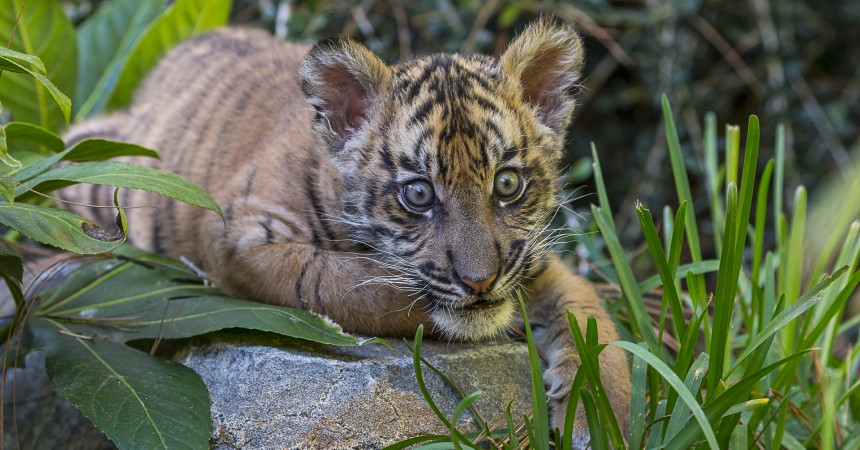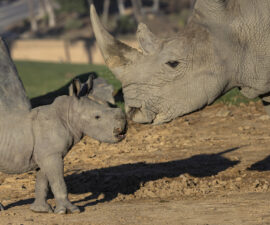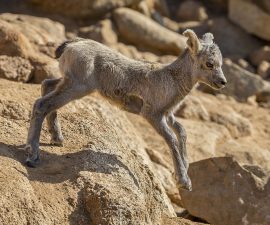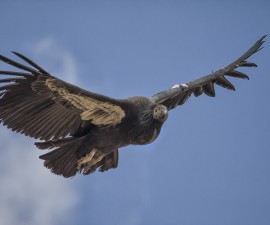Sometimes, I don’t know if I’m training Suka or if Suka is training me. Sumatran tiger Suka is our newest “stripe” in the Tiger Trail “streak.” Suka turns six months old on March 14, weighs over 35 pounds, and is one of the smartest cats I have ever worked with.
Suka is an unusual cub because he is hand-raised. His mother Joanne cared for him for his first four days, but she ultimately lost interest, perhaps because she is a first-time mom and needs more practice. Or perhaps because Suka is a single cub and female Sumatran tigers typically give birth to two or three cubs. However, the most probable explanation is that Joanne rejected Suka because he was sick. Nursing and protecting a cub, especially a sick cub, requires a lot of maternal investment, which may be wasted if that sick cub doesn’t make it past infancy. At the Safari Park, Joanne doesn’t have to worry about many of the mortality factors that would affect a wild cub, but she doesn’t know that she lives at the “Club Med” for animals. In her mind, newborn mortality is still a substantial problem, and putting all her eggs in one unhealthy Suka-shaped basket was risky. After Joanne lost interest in Suka, the animal care team began hand-raising him to ensure that he gets the best possible care. Thanks to the veterinary staff, Suka has made a full recovery!
Ideally, Joanne would have raised Suka. But you won’t hear me (or any of the team, for that matter) complaining about hand-raising a tiger cub! This is the first cub I’ve had the opportunity to work with, so this is an incredible treat for me. “Suka” means “loved” in Malay, and his name perfectly sums up my feelings. Suka recently graduated from the Animal Care Center, aka the Park’s nursery, and now lives at Tiger Trail full-time. This means that I had the opportunity to finish his bottle-feeding and transition him to the ground-meat diet he will eat as an adult tiger. He received his first beef femur bone at Tiger Trail, and now he shifts through the house and stands on the scale like an adult!
My favorite part of each day is training Suka. At this point, we are are still able to be in the enclosure with him, but soon that will come to an end. The training that we do prepares him for the day when all husbandry will be accomplished with a barrier separating him from his keepers. Suka is learning to lie down, sit, walk between two keepers when called, touch his nose to a target, sit on a station, go in his crate, stand on the scale, and rise up on his back legs. He is catching on so quickly and is (in my totally unbiased opinion) a little genius.
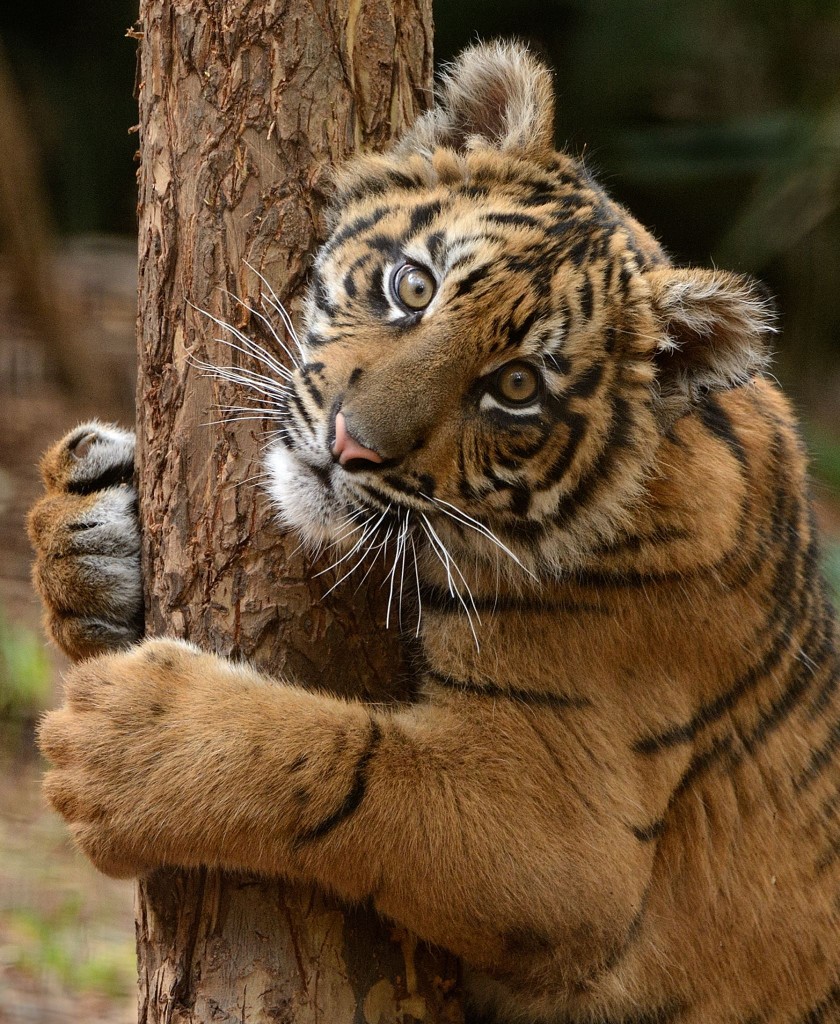
After a tough start in life, Suka is embracing new adventures. Photo by Mike Wilson
We started his training by introducing a whistle “bridge.” The bridge lets Suka know that he has done what was asked and food is on the way. However, in the beginning, Suka had no way of knowing what the whistle meant. So we paired the whistle sound with food until we saw he eyes light up when he heard it—whistles mean meatballs! Once Suka understood the bridge, we began baiting him with meatballs into different positions. For example, I would hold a meatball up for Suka to see and then slowly lower my hand until the meatball was almost touching the ground. Suka would lie down to keep his face level with the meatball. I quickly said the word “down,” showed him the hand cue, bridged with the whistle, and fed him the meatball. After many repetitions, I cued “down” and “Suka, lay down.” Ta-da!
Now we are working with Suka to hold each basic behavior for longer durations. Once he graduates to more complex behaviors, Suka will learn how to press his side against the mesh for vaccines and how to back up in a chute so a vet can draw blood from his tail. As the behaviors get harder, the rewards get better—Suka will start enjoying blood, rabbits, and shank meat.
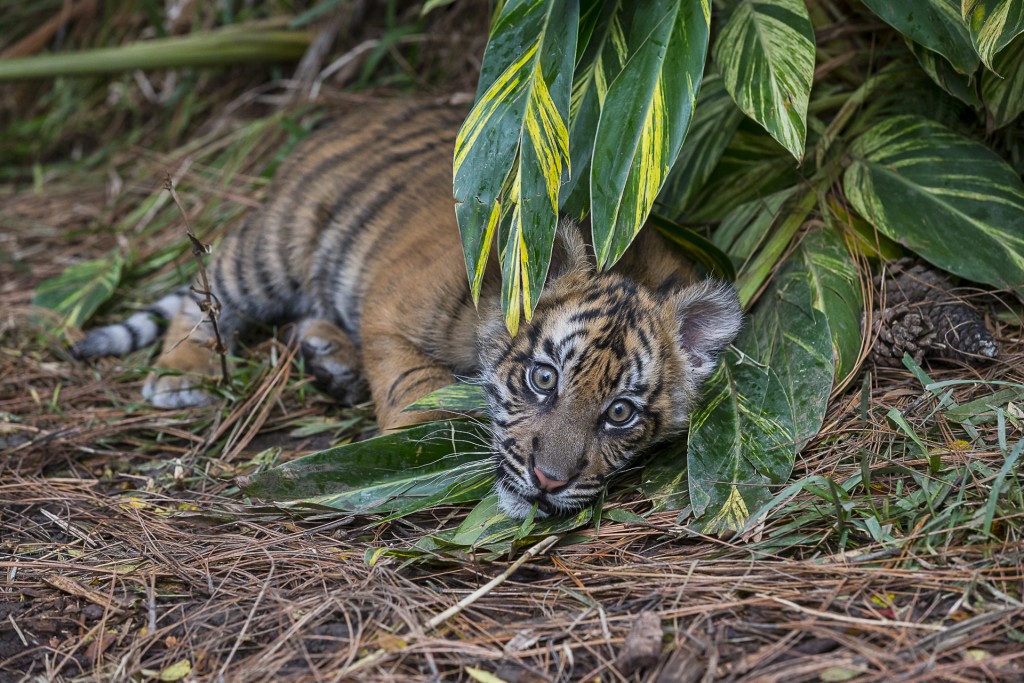
Suka greatly enjoys the lush plantings in his habitat. But using them for a pillow is the most gentle way he engages with them!
In addition to training, Suka gets playtime on exhibit every day. To the chagrin of the Park’s horticulture team, Suka loves chewing on the plants! He now has many die-hard fans (besides me) who come to see him almost every day. Since he was hand-raised, he loves his paparazzi and can often be found posing near the windows or training wall. If you are lucky, you can see Suka’s training in action on exhibit at our 11:45 a.m. talk at Tiger Trail. Every time he “chuffs” (a soft greeting sound) to me at the beginning of a training session, my heart melts all over again.
You can read more about Suka’s early months in Labor of Love.
Elise Newman is a keeper at the San Diego Zoo Safari Park. Read her previous blog, An Insider’s Look at the Horticulture Department.

